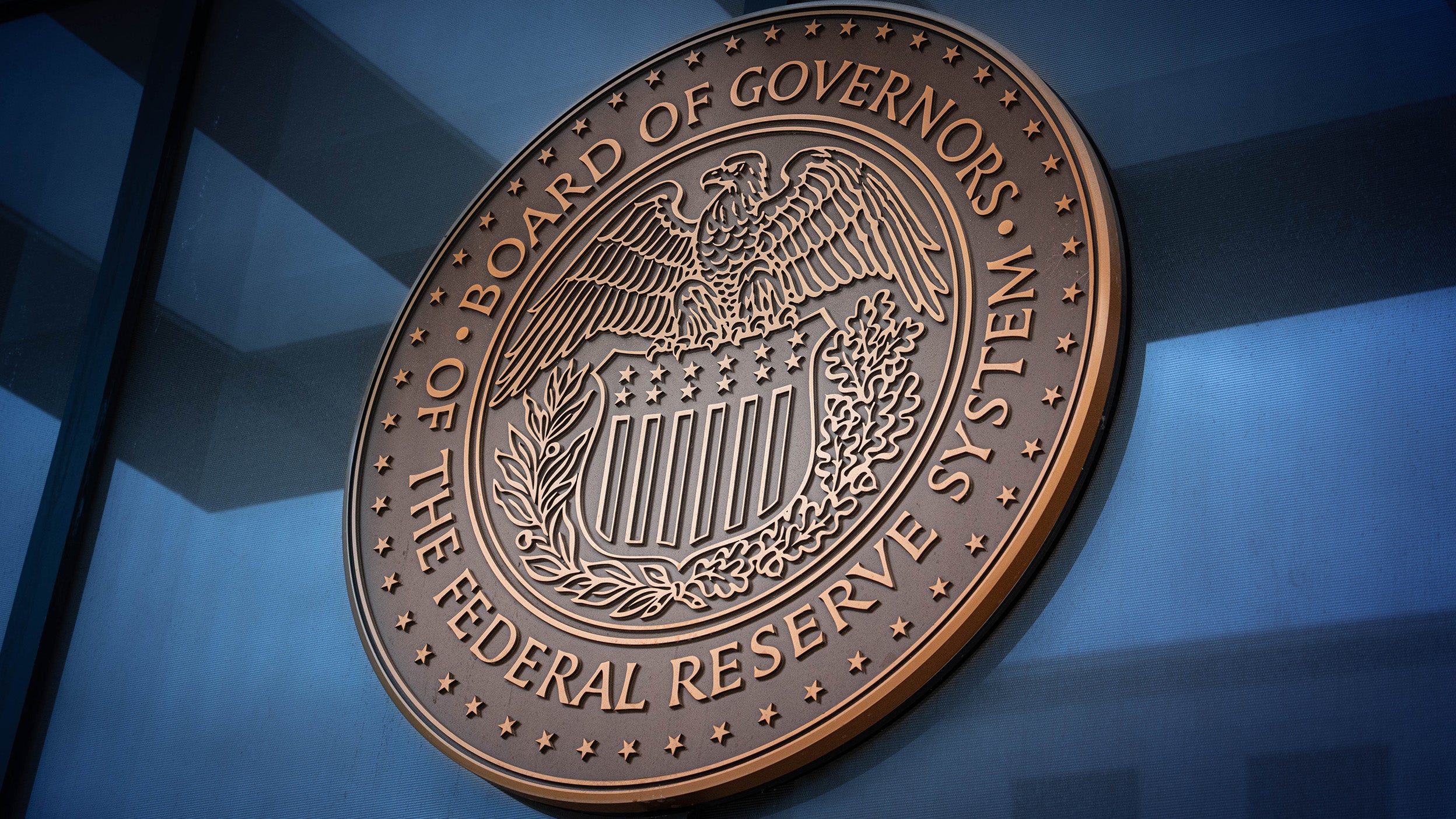
Markets and Economy Has the catalyst for stock diversification arrived?
For investors looking to diversify their mega-cap technology exposure, improving growth and falling interest rates may be good reasons.

We’re in a K-shaped economy, with higher-income and lower-income Americans on divergent paths.
The comparison between the current market advance and the one ahead of the tech bubble is hyperbole, in my view.
Will the market be naughty or nice between Thanksgiving and New Year’s Eve? I’m going with nice.
Naming things is hard. I’ve wrestled with naming my children and my year-ahead outlooks, for example. You can imagine my surprise when K-pop came to mind as the perfect name for Invesco’s soon-to-come 2026 outlook.
Why? Because it’s a K-shaped economy where the wealthiest Americans appear to be enjoying strong growth while lower-income households struggle. The pop could be a nod to the so-called AI bubble (which we’ll discuss in more detail later in this column), though I saw it more as markets popping higher in 2026’s K-shaped environment.
Of course, if you must explain it, you cannot use it. And as my marketing partners reminded me, it wasn’t exactly a win for search engine optimization anyway.
Still, I think it’s too good not to use somewhere (if I say so myself). Plus, I’m going to keep trying to appeal to the younger generation. The movie K-Pop Demon Hunters racked up 325 million views in 90 days.1 Surely a few of those viewers read Above the Noise. And like the Demon Hunters, I’ll keep working to protect investors from any dangers, albeit without singing. The people don’t want to hear it, and the compliance department can’t have me singing, “we’re goin’ up, up, up.”
To assess the recent sell-off in the artificial intelligence (AI) trade, I’m using Occam's Razor, which suggests that the simplest explanation is usually the easiest one. The simplest explanation: Market volatility and downturns rarely emerge out of nowhere. They have tended to result from uncertainty about monetary policy.
For insight, I charted the level of the Goldman Sachs Non-Profitable Tech Basket index, and a few observations stand out.2
Occam's Razor would suggest that lower borrowing costs are essential for money-losing tech firms that need to finance operations and whose valuations depend on profits that may not materialize for years. In short, watch the Fed!
…the comparison between the current market advance and the one ahead of the 1995 tech bubble is hyperbole. Investors can point to some parallels, including concerns about circular financing and overinvestment, but the magnitude of the advance in the Nasdaq-100 Index so far is nothing like the experience from 1995 to 2000. The Nasdaq-100 Index climbed 1,000% from 1994 to 1999. It has climbed 200% since ChatGPT launched on November 30, 2022.3 While that's a significant return, it's not in the same vicinity yet of the late 1990's.
“My estimation of value in securities is not now, and has not been for some time, in sync with the markets.”
—Michael Burry, founder, Scion Asset Management
Michael Burry’s recent comments on an AI bubble were shared in his letter announcing the closure of Scion Asset Management earlier this month. They underscore his belief that markets are detached from fundamentals. Given his prescient call on the US housing market in 2008, investors pay attention when he speaks. Or as Jonathan Levin at Bloomberg notes, “we’re obsessed with contrarian investors that make concentrated hero bets on macro-outcomes,” which amplifies the fear his remarks generate. Personally, I’m old enough to remember Burry’s warnings towards the end of the 2022 correction that the bottom hadn’t been reached, as well as his 2023 call to sell.
Burry’s decision to close his fund and suggest that “the only winning move is not to play” adds to the anxiety. Yet perspective is important. Valuations are elevated but roughly half of 1999 levels,4 and tech sector capital expenditures as a share of free cash flow, currently 38%, are in line with the 35-year average.5 That’s a stark contrast to the late 1990s, when many companies struggled to finance growth sustainably.
And while Burry may choose to sit out, many of us still need to play, because we believe disciplined participation, not avoidance, is how long-term goals are achieved.
A: First, I’ll admit I had to look up the actual definition of Santa Claus rally. It refers to the last five trading days of December and the first two trading days of January. Historically, the stock market has been positive more than 75% of the time during this period,6 which doesn’t sound all that remarkable, given markets tend to rise more often than they fall. What is notable, however, is that the average gain of about 1.3% over those seven days is meaningfully higher than the 0.2% average return over a typical seven-day stretch.7
Candidly, I initially assumed that the question was about the period between Thanksgiving and year-end. Will the market be naughty or nice? I’m going with nice. Why? As I’ve been saying, yields are low,8 oil prices are low,9 the economy appears resilient,10 inflation expectations are contained,11 and the Fed is in an easing cycle. All of that should be supportive of risk assets, regardless of what happens during the seven-day Santa Claus rally window.
A: It’s akin to driving in fog. You’ll likely reach your destination, but you need to adjust your line of vision and concentrate harder. To list a few: For the labor market, I’ve relied on the ADP National Employment Report, which has slowed to a six-month average of just 52,000 monthly private-sector jobs.12 For the consumer, I’ve been tracking credit card spending data, which continued to show resilience in US household demand.13 For inflation, I monitor bond market expectations, and those remain contained.14
That said, I’m happy the government has reopened and, like any driver, I’m looking forward to the fog lifting.
I’m often asked what everyone will do for a living as AI reaches its full potential. When the tough questions emerge, I usually phone friends inside Invesco. This month, I had the opportunity to sit down with Zack Kass, a global AI advisor and former Head of Go-to-Market at OpenAI.
Among my key takeaways from our discussion:
Our full conversation will soon be featured on a Greater Possibilities podcast. Subscribe to get this conversation and other episodes added to your podcast queue.
I spent a few minutes with the restaurateur Stephen Starr in the CNBC green room and thoroughly enjoyed him goofing on me, saying the makeup artist hadn’t managed to make me look any better. Guilty as charged. I asked him the secret to building a restaurant empire, and he said it’s persistence and always striving to make things better.
If that wasn’t enough, I was later asked to appear on a financial webinar with Tim Tebow, the Heisman Trophy–winning quarterback. Tebow spoke about the challenges of coming into a lot of money quickly and emphasized the importance of having a great team with a shared vision. He urged investors to not only focus on the return on investment but also to consider the return on the impact of it.
Any rumors that I asked Starr for a preferred table at Babbo or for Tebow to get a relative into the University of Florida are unfounded!

For investors looking to diversify their mega-cap technology exposure, improving growth and falling interest rates may be good reasons.

A rate cut, which markets are pricing in despite Fed member differences, and an expected improving economy in 2026, could support stocks.

We believe global equities may continue to rise in the new year, and we expect new opportunities to be unlocked as market leadership evolves.


Get the latest information and insights from our portfolio managers, market strategists, and investment experts.
Important information
NA5008702
Image: sibway / Getty
All investing involves risk, including the risk of loss.
Past performance does not guarantee future results.
Investments cannot be made directly in an index.
This does not constitute a recommendation of any investment strategy or product for a particular investor. Investors should consult a financial professional before making any investment decisions.
Invesco is not affiliated with OpenAI.
The ADP National Employment Report measures nonfarm private payrolls. It is published monthly in collaboration with Moody’s Analytics.
AI technology companies are sensitive to specific risks such as small markets, business cycle changes, economic growth, technological progress, obsolescence, and regulation. These companies may have limited products, markets, resources, or personnel, making their securities more volatile, especially for smaller start-ups. Rapid technological changes can adversely affect their results. AI companies often rely on patents, copyrights, trademarks, and trade secrets to protect their technology, but there is no guarantee these protections will be sufficient. Significant research and development (R&D) spending doesn’t ensure product or service success.
Cash flow is the net amount of cash and cash equivalents generated by a business.
The Consumer Price Index (CPI) measures the change in consumer prices and is a commonly cited measure of inflation.
Free cash flow (FCF) is a measure of financial performance calculated as operating cash flow minus capital expenditures.
Gross domestic product (GDP) is a broad indicator of a region’s economic activity, measuring the monetary value of all the finished goods and services produced in that region over a specified time period.
Inflation is the rate at which the general price level for goods and services is increasing.
Monetary easing refers to the lowering of interest rates and deposit ratios by central banks.
A risk asset is generally described as any financial security or instrument that carries risk and is likely to fluctuate in price.
The S&P 500® Index is an unmanaged index considered representative of the US stock market.
A Santa Claus rally is when the stock market rises at the end of December. This phenomenon has been attributed to holiday spending by consumers, tax considerations, and more.
A spot price is the current market price at which an asset is bought or sold for immediate payment and delivery.
In general, stock values fluctuate, sometimes widely, in response to activities specific to the company as well as general market, economic, and political conditions.
Many products and services offered in technology-related industries are subject to rapid obsolescence, which may lower the value of the issuers.
The price-to-earnings (P/E) ratio measures a stock’s valuation by dividing its share price by its earnings per share.
The opinions referenced above are those of the author as of Nov. 20, 2025. These comments should not be construed as recommendations, but as an illustration of broader themes. Forward-looking statements are not guarantees of future results. They involve risks, uncertainties and assumptions; there can be no assurance that actual results will not differ materially from expectations.
This link takes you to a site not affiliated with Invesco. The site is for informational purposes only. Invesco does not guarantee nor take any responsibility for any of the content.